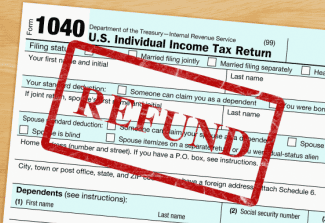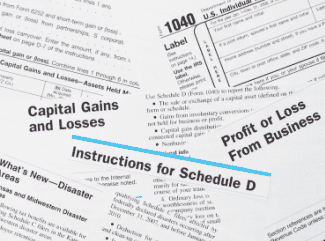9 Easy Steps for a Mid-Year Tax Review
by Thomas F. Scanlon, CPA, CFP®

1) Review your withholding. Review your prior year income tax return for the income tax paid. Check your year-to-date paystub to see if your withholding is tracking where it needs to be. If you need to adjust your federal withholding, file Form W-4 with your employer. You should also review your state income tax withholding. If you are employed in Connecticut and want to adjust your Connecticut withholding, complete an updated CT-W-4 and submit this to your employer.
2) Review your estimated tax payments. The self-employed, retirees or investors with passive income through interest, dividends, capital gains or rents may not have any income tax withheld and need to pay estimated taxes. The second quarter estimated tax is due on June 15th. The final two payments are due on September 15th and January 15. The payment is made on Form 1040-ES. Connecticut estimated tax payments are made on Form CT-1040-ES.
3) Maximize your contributions to your 401(k) plan. Employees whose employer offers a 401(k) plan can put away up to $17,000 per year into the plan. Taxpayers over age 50 can put an additional $5,500 in a so-called “Catch “ Up” contribution.
4) Maximize your contributions to a Roth IRA. Taxpayers that are eligible can put $5,000 into a Roth IRA. Taxpayers over age 50 can make an additional $1,000 contribution. Unlike a regular IRA, the contribution is not tax deductible. If however the account is open for 5 years and the distributions occur after age 59 1/2, then all of the distributions are tax-free.
5) Consider a Roth Conversion. This is when assets are removed from a regular IRA, taxed, and then converted into a Roth IRA. Younger taxpayers or investors with cash outside of the IRA to pay the tax should consider this strategy.
6) Review your capital gains and losses. The long-term capital gains rate is stated at 15%. This is scheduled to increase to 20% in 2013. Long-term capital gains are defined as capital assets sold that have been held longer than a year. Short term capital gains are assets held less than a year. These are subject to tax at ordinary income tax rates.
7) Take your Required Minimum Distribution (“RMD”). Taxpayers over age 70 1/2 must begin to take their RMD from their IRA’s and other tax deferred accounts.
![]() Consider gifts to family members. Individuals can make gifts up to $13,000 per year to an unlimited number of people without having to file gift tax returns or pay any gift tax. The person making the gift does not get an income tax deduction. They do however get these assets out of their estate. Parents can help children and grandchildren by making these gifts.
Consider gifts to family members. Individuals can make gifts up to $13,000 per year to an unlimited number of people without having to file gift tax returns or pay any gift tax. The person making the gift does not get an income tax deduction. They do however get these assets out of their estate. Parents can help children and grandchildren by making these gifts.
9) Step up your donations to charity. Charitable donations are allowed as an itemized deduction. Many charitable organizations are hurting. Help the charity, take a tax deduction and feel good about yourself.
ACTION ITEM: Take these 9 Easy Steps for your Mid-Year Tax Review. The year-end will be here before you know it.
Thomas F. Scanlon, CPA, CFP® is with Borgida & Company, P.C., Certified Public Accountants in Manchester, Connecticut, celebrating 44 years of tax, advisory and accounting services. Call 860.646.2465 for more.
See 4 Ways to Help Your CPA and Reduce Your Taxes.
With AAOA, landlords have resources at their fingertips. Check out our Landlord Forms page.
American Apartment Owners Association offers discounts on products and services for landlords related to your rental housing investment, including rental forms, tenant debt collection, tenant background checks, insurance and financing. Find out more at www.joinaaoa.org.















 Accessibility
Accessibility